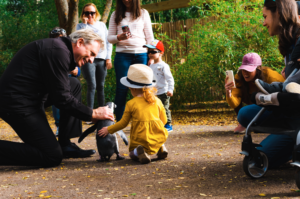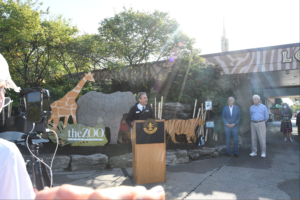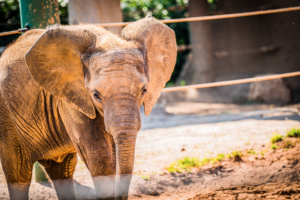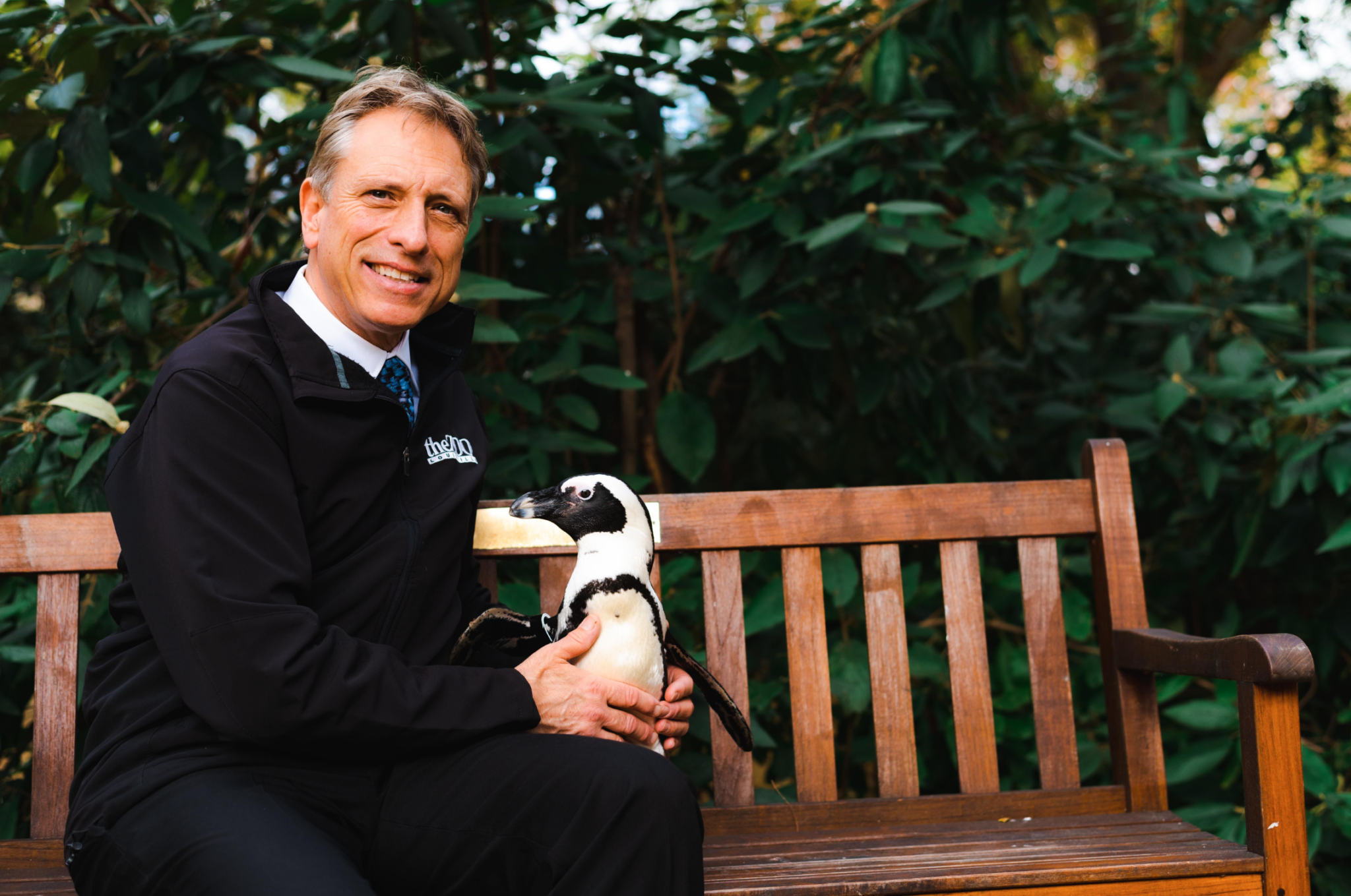Dan Maloney Is Taking on Louisville Zoo Executive Director Role With Vigor
Writer / Gavin LaPaille
Photography Provided
When Dan Maloney first visited Louisville, he knew the city was something special. Two decades later, he has officially joined the community.
 Maloney took over as the newest executive director of the Louisville Zoo in October, becoming just the fifth person to hold the position in its 52-year history. He is replacing John Walczak, who retired after 36 years, the last 17 as director.
Maloney took over as the newest executive director of the Louisville Zoo in October, becoming just the fifth person to hold the position in its 52-year history. He is replacing John Walczak, who retired after 36 years, the last 17 as director.
The appointment brings Maloney full circle after years of following the zoo from afar. Maloney made his first trip to Louisville 20 years ago while with the Audubon Zoo in New Orleans, checking out a giraffe known as Murphy whom Louisville was looking to relocate. Maloney was able to tour the grounds and visit the recently opened Islands exhibits, which left a strong impression.
“I was impressed by the new concept, with animals featured in a place where they could rotate through different exhibits,” Maloney says. “I thought any place that had the will and the way to build this place is somewhere that I would like to be associated with. I got to see the community and thought it was a beautiful town. I kept my eye on Louisville over the years and checked in on how things were going. When I heard John might be thinking about retiring, I reinforced that I’d love to be considered as his successor.”
After going through several rounds of interviews, Maloney says he was ecstatic upon receiving the offer to oversee a staff that consists of 120 full-time, 10 part-time and hundreds of seasonal employees at the Louisville Zoo. Maloney will represent the zoo to the Louisville mayor and the community as a whole.
“My role is to set the tone,” Maloney says. “We’re municipality aligned and metro government employees, so our relationship is even stronger with local government. I try to articulate a well-thought-out vision, and build relationships that are so important for our support and engagement with all parts of the community.”
Since 2010 Maloney served as deputy director of animal care for the Jacksonville Zoo and Gardens in Florida. Maloney has also spent time at the Wildlife Conservation Society’s Bronx and Queens zoos, the Philadelphia Zoological Gardens, and Australia’s Melbourne Zoo during his career, in addition to his stops in New Orleans and Jacksonville.
Working with many attractions accredited with the Association of Zoos and Aquariums (AZA) has given Maloney much experience to draw on as he takes over in Louisville. It’s through the Louisville Zoo’s association with the AZA that Maloney developed a relationship with Walczak and Bill Foster, another former zoo executive director. Both Foster and Walczak have offered their assistance as Maloney gets comfortable in his new role.
“I certainly see [my background] as invaluable in how I function,” Maloney says. “I’ve worked with some of the top organizations in the world. Each contributes different expertise depending on what we’re talking about, be it remarkable habitats or enrichments or great guest experiences.”

Maloney says he has been interested in wildlife since he was a toddler, and feels fortunate every day to be working in a field he loves. He can also credit his career for how he met his wife Laura when both worked in Philadelphia, and says he has nothing but fondness for the wildlife community.
“If you’re a curious person you can probably satisfy that in a lot of different pursuits, but if you want to be humbled on a daily basis and serve that curiosity, nature and wildlife is a good place,” Maloney says. “What we don’t know about wildlife far outweighs what we do know. Human arrogance makes us think we know everything we need to know, but really it’s the other way around.”
With attendance figures regularly over 700,000 visitors per year, Maloney says he was impressed with what has been achieved in Louisville. Originally opening in 1969, the Louisville Zoo is a nonprofit organization and the only accredited zoo in the state of Kentucky. With 130 acres of land and more than a thousand animals that call it home, it is known for innovative exhibits and conservation programs. The Islands, Gorilla Forest and Glacier Run have all received recognition, and the Louisville Zoo has established itself as a leader with the AZA’s Species Survival Plan. It is one of a handful of institutions in the world to house a captive breeding population of black-footed ferrets.
“[The Louisville Zoo] is still a relatively new zoo,” Maloney says. “The determination of the Louisville Zoo to not be denied despite its age is really a credit to the institution. I’ve admired what has been accomplished here. We have a lot of motivated and mission-driven individuals.”
There will be at least one familiar face around the grounds to Maloney. Casey, a silverback gorilla born in 1982, came to Louisville from New Orleans and overlapped with Maloney’s time at Audubon. The two are now reunited in Louisville, and Maloney says Casey is as handsome as ever.
“[Casey] is a big boy and he’s turned out to be a really wonderful animal,” Maloney says. “It’s fun to bounce around and into each other over time. It’s a close community. You end up working with individuals you have known over the years, sometimes in multiple facilities.”
Maloney says he definitely feels a high level of support within the community for the zoo and what its leaders hope to accomplish in the future. Already, Maloney is working with local leaders to increase its inclusivity and make it easier for anyone across the city and region to visit.
“We’re blessed to have a committed and dedicated foundation board,” Maloney says. “We also have been well supported by the mayor’s office and we have a really dedicated friends-of-the-zoo group. That’s a good triple threat and I feel really good to have that kind of support. If I didn’t feel the support was within the community, I wouldn’t have signed on.”
One of the more ambitious projects Maloney will be leading is the development of Kentucky Trails, which will look to capitalize on 19 acres of zoo property that currently is unavailable to the public. Part of the Louisville Zoo’s 2016 Master Plan, Kentucky Trails is intended to be a sequence of exhibits featuring wildlife native to Kentucky including black bears, opossums and foxes. Once completed, the exhibit will provide guests with diverse activities such as flatboat rides, birdwatching and picnicking.
“[Kentucky Trails] has a beautiful, wild feel to it,” Maloney says. “This is an opportunity for tourists to immerse themselves in Kentucky. We want an historic and authentic feel for what we’re telling. I can see it in my mind how appealing this area will be.”
Maloney says he takes the Louisville Zoo’s responsibility to the community very seriously and hopes to continue establishing relationships that will help it grow.
 “We see the zoo not only as a place to talk about conservation of species and animal wellness, but also human wellness,” Maloney says. “Outdoor spaces that help people connect with nature are really important. You can’t underestimate that value to human well-being. People come away with lifelong family memories and get to enjoy this regional attraction. We see ourselves as an important asset to the state and the region.”
“We see the zoo not only as a place to talk about conservation of species and animal wellness, but also human wellness,” Maloney says. “Outdoor spaces that help people connect with nature are really important. You can’t underestimate that value to human well-being. People come away with lifelong family memories and get to enjoy this regional attraction. We see ourselves as an important asset to the state and the region.”
For more info on the Louisville Zoo, visit louisvillezoo.org.





